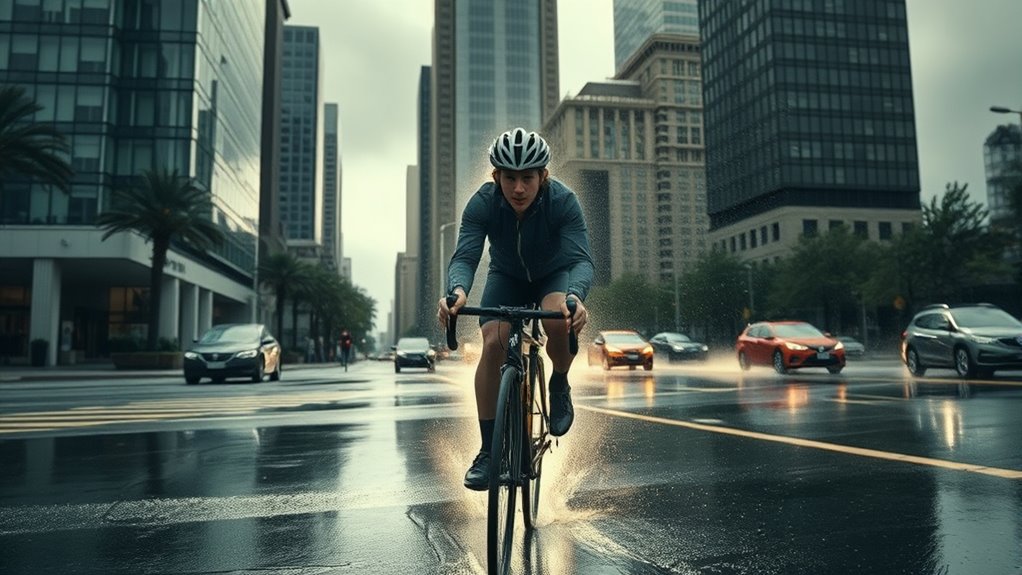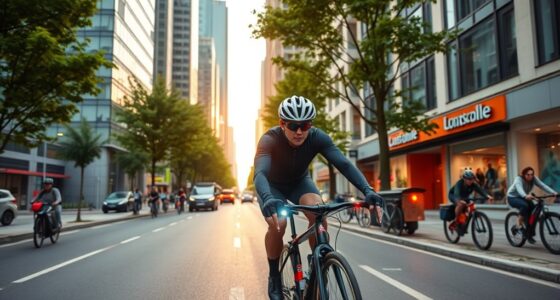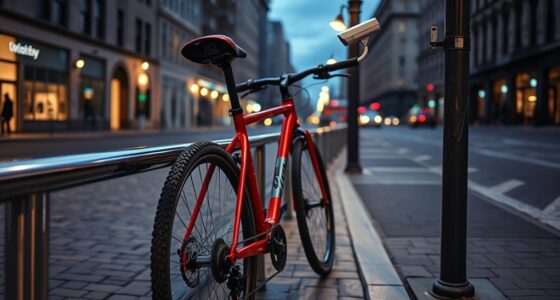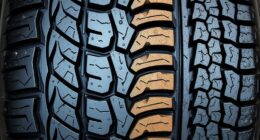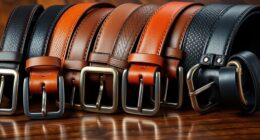To weather your city commute in rain, heat, and cold, equip yourself with waterproof gear, bright reflective clothing, and properly functioning lights for visibility. Slow down on wet roads, maintain longer braking distances, and choose routes wisely to stay safe. Layer your clothing for temperature changes, stay hydrated, or bundle up as needed. Staying comfortable and prepared turns challenging weather into an opportunity for confident urban biking—explore these tips further to master every weather condition.
Key Takeaways
- Prepare with waterproof gear, fenders, and bright visibility accessories for safe rainy rides.
- Adjust clothing layers and stay hydrated to manage heat and cold effectively.
- Slow down, maintain extra braking distance, and be cautious of slick surfaces in wet conditions.
- Use thermal or breathable clothing to stay comfortable and prevent weather-related health issues.
- Post-ride, dry off, clean gear, and reflect to improve future weather-adapted biking strategies.
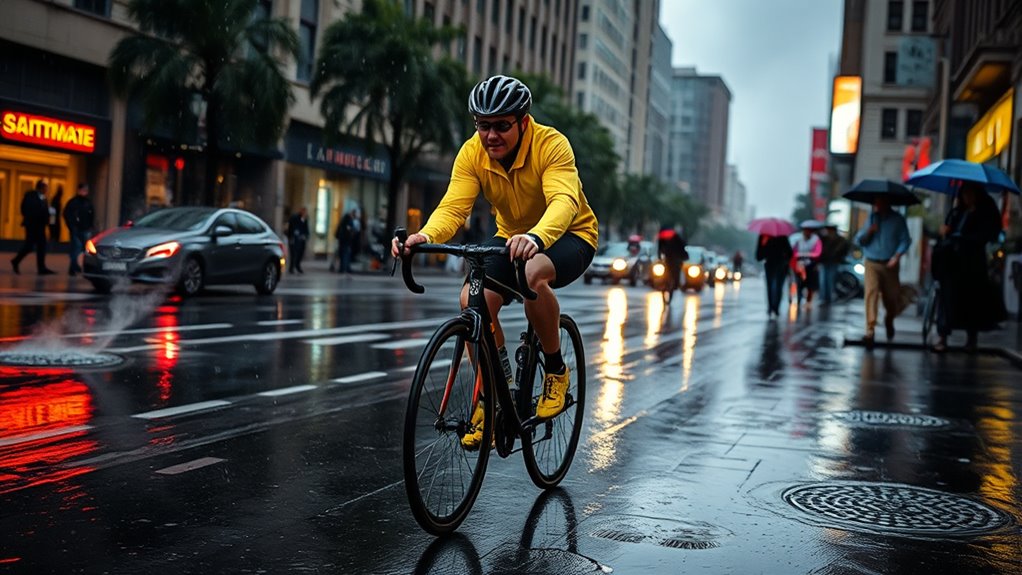
City commutes can be a daily grind, but with the right mindset and strategies, you can make them more manageable. Biking through rain, heat, or cold might seem intimidating, but it’s definitely doable with a bit of preparation and smart choices. When the sky opens up and rain starts falling, don’t let it dampen your spirits—or your ride. Invest in a good waterproof jacket and a reliable rain cover for your bike. Fenders are also worth installing—they keep water and mud off your clothes and make your ride more comfortable. Wearing quick-drying clothes and waterproof shoes helps you stay dry and avoid that soggy feeling. Remember, riding in the rain isn’t just about staying dry; it’s about staying visible. Use bright or reflective gear, and make sure your bike’s lights are working well. Wet roads can be slick, so slow down a bit and give yourself extra braking distance. Be extra cautious at intersections and avoid sudden turns that could cause slipping. Rain can make your ride more challenging, but it also offers a chance to embrace the elements and enjoy the city in a different light. Proper lighting and visibility are essential for safety in wet conditions. Additionally, paying attention to exfoliation and skin health can help prevent skin irritation caused by exposure to the elements during your ride. Incorporating clothing layers that can be easily adjusted can help you stay comfortable in changing temperatures. Once the storm passes, dry off, change into fresh clothes, and enjoy the sense of accomplishment.
Frequently Asked Questions
What Are the Best Rain Gear Options for City Biking?
When choosing rain gear for city biking, you want options that keep you dry and comfortable. Look for a waterproof jacket with breathability to prevent overheating, and wear waterproof pants or overtrousers. A good waterproof, breathable helmet cover is essential, along with waterproof gloves and shoe covers. Reflective elements on your gear boost visibility. With the right gear, you stay dry and safe, no matter how heavy the rain.
How Can I Prevent Bike Corrosion in Humid Weather?
To prevent bike corrosion in humid weather, you should regularly clean and dry your bike, especially after riding in rain or dew. Apply a protective lubricant to the chain and moving parts to repel moisture. Store your bike in a dry, sheltered spot when not in use. Consider using corrosion-resistant components and periodically inspect for rust, addressing any early signs immediately to keep your bike in top condition.
What Are Safety Tips for Cycling in Extreme Heat?
When cycling in extreme heat, stay safe by wearing lightweight, breathable clothing and a helmet with proper ventilation. Hydrate frequently to prevent dehydration, and plan your route to avoid the hottest parts of the day. Use sunscreen and sunglasses for protection. Take regular breaks in shaded areas, and listen to your body—if you feel dizzy or weak, stop and cool down. Your safety depends on staying hydrated and protected.
How Do I Stay Visible During Low-Light Cold Months?
To stay visible during low-light cold months, you should wear bright, reflective clothing and accessories like vests or ankle bands. Keep your bike equipped with front and rear lights, and make certain they’re bright enough to catch drivers’ attention. Position your lights high on your bike for maximum visibility. Regularly check and replace batteries, and consider using additional reflective tape on your bike and gear to stay safe in dim conditions.
Are There Specific Bike Maintenance Tips for Winter Riding?
Imagine your bike as a loyal guardian facing winter’s harsh whispers. To keep it strong, regularly clean and lubricate your chain to prevent rust. Check tire pressure often for better grip on icy roads. Inspect brakes to ensure safety, and protect vulnerable parts with winter-specific covers. By nurturing your bike, you make sure it’s ready to brave cold mornings, turning winter rides into empowering journeys rather than struggles.
Conclusion
So, no matter if you’re battling a torrential downpour, scorching heat, or icy cold, your bike becomes your unstoppable shield against the weather. With each ride, you prove that you’re more resilient than a fortress and faster than a lightning bolt. Embrace every challenge, because nothing can break your spirit—or your ride. Keep pedaling through weather’s worst, and you’ll conquer the city like a true weather warrior.
